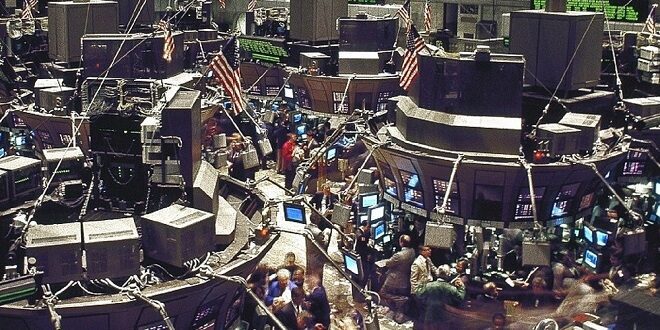Last week, stocks closed sharply lower, as the weight of the ever-increasing coronavirus cases in half of the United States became too much for the optimistic investors to overlook.
Florida and Texas— which had an early lockdown— are now the epicenters of America’s outbreak. Both states took additional measures to reverse steps towards normalizing public life by limiting restaurant capacity and closing bars following the increase in coronavirus cases.
Despite the optimism that has allowed the markets to resume business, the news rattled traders and pushed each of the 3 major indices down over 2 percent. The volatility jump pushed the S&P 500 to the lowest level in just 2 weeks.
Amidst the growing fears of the resurgence in COVID-19 cases, CFRA chief investment strategist Sam Stovall said that they also have challenging times ahead. Since the COVID concern has not yet run its course, we will be contending with it for a while.
Dow underperformed compared to NASDAQ and S&P 500. On the other hand, the shares of Nike dropped after reporting a major quarterly loss. JPMorgan Chase and Dow components Goldman Sachs traded lower alongside other major banks after the Federal Reserve said that it would restrict dividends and share buybacks on the financial companies for the third quarter.
Such a move was intended to make sure that the larger, major banks stay resilient amidst the economic uncertainty from the COVID-19 pandemic.
Meanwhile, the further surges in COVID-19 cases in a few parts of the country have motivated investor jitters, with indications pointing to an ever-increasing chaotic re-opening process. Florida set a record in new COVID-19 infections and new cases elsewhere in the Sun Belt states continued to rise.
Individual firms have also pushed back their re-opening dates due to the latest jumps on COVID-19 cases. Tech-giant Apple even added 14 stores located in Florida to its lengthy list of store re-closures, after previously announcing that it would be re-closing 7 stores in Houston, Texas area, and almost a dozen stores across 4 states. Disney, on the other hand, said that it will indefinitely delay the re-opening of its California theme parks past their earlier July 17 target.
Stocks at the Lowest Level In 2 Weeks With The Resurgence of Virus Fear
By the end of June 26 session, the 3 major indices are:
- Nasdaq: Down 259.78 points to 9,757.22
- Dow: Down 730.12 points to 25,015.48
- S&P 500: Down 74.74 points to 3,009.02
American Airlines to Fill Planes Starting July 1
American Airlines said that it will start filling planes to capacity at the beginning of July. This means that carriers will now make all middle seats available again for passenger purchases. Since mid-April, airlines had dropped passenger capacity within flights in order to follow social distancing measures.
The company will allow companies to know whether more open flights become available and allow them to switch flights for free. Starting June 30, it will also ask passengers to certify that they had been free of COVID-19 symptoms for the past 14 days.
The shares of American Airlines fell over 6 percent in intraday trading, amidst a wider pullback in the market and other travel stocks.
Florida Stops Alcohol Consumption
The Department of Business and Professional Regulation in Florida said that bars in the state should stop serving alcohol immediately because of the surge of COVID-19 cases. On June 26, Florida reported a record increase in COVID-19 cases with new infections rising 7.8 percent over the prior day to a 122,960 total.
Consumer Sentiment Went Lower As Virus Infections Spread
Final Monthly Surveys of Consumers conducted by the University of Michigan recorded a low consumer sentiment, reflecting concern over the increasing COVID-19 cases in some areas of the US.
In the final June reading, the index was78.1 which is down from the 78.9 from earlier the month of June. The consensus economists expected a 79.2 reading.
The sub-indices which track consumers’ assessment of the current conditions as well as future expectations were also revised to lower numbers in the final print.
While most consumers believe that the economic conditions could worsen from the recent total shutdown of the national economy, the prospective economy growth is more closely tied to progress against and COVID-19 pandemic. While the early re-opening of the economy has helped restore incomes and jobs, it comes with the cost of a surge in the virus spread.
Core PCE Increased a Still-muted 1 percent in May
The core Personal Consumption Expenditure (“PCE”) had a 1 percent increase in May over the last year and matching the pace of increase in April. The metric strips out the more volatile measures including energy and food and serves as the referred inflation target of the Federal Reserves.
At 1 percent, core PCE through the COVID-19 pandemic has actually held well below the symmetrical 2 percent target of the Fed.
The PCE’s broader measure inclusive of all categories, increased 0.1 percent over June, following a 0.4 percent drop in April.
Personal Spending Rebounds to Increase By 8.2 Percent in May after a Drop in April
The Bureau of Economic Analysis said that personal spending increased by 8.2 percent in May, following a revised 12.6 percent drop in April, a record drop.
Consensus economists expected spending to increase by 9.3 percent in May.
Meanwhile, personal income dropped 4.2 percent after April’s record of 10.8 percent jump. The surge in the month of June came about because of the increased stimulus program of the government, which included new unemployment benefits as well as stimulus checks to persons under an income threshold.

